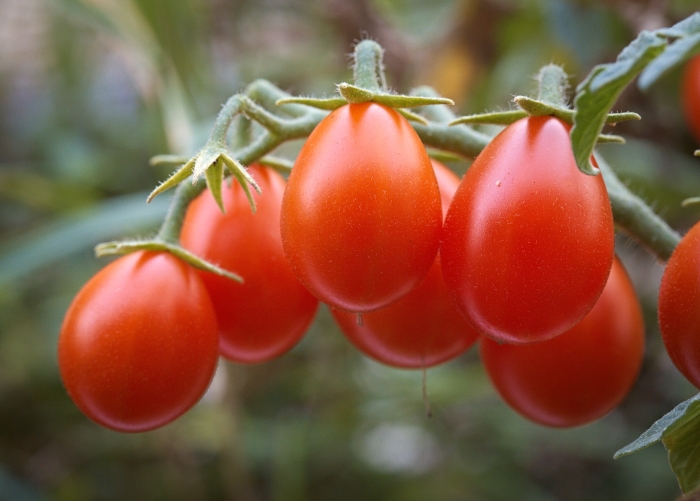Tomato Plant
(Solanum lycopersicum)
Tomato Plant (Solanum lycopersicum)
/
/

hedera.baltica
CC BY-SA 2.0























































Estimated Native Range
Summary
Tomatoes are highly valued for their culinary versatility and are a staple in gardens and commercial agriculture. They offer a range of health benefits due to their high vitamin C and antioxidant content. In cultivation, tomatoes require full sun and regular watering, thriving in well-drained soils with a pH between 6.0 and 6.8. They are susceptible to a variety of diseases, including blight and tomato hornworms. To prevent problems, practice crop rotation and choose disease-resistant varieties. Tomatoes can be invasive if not managed, as they readily self-seed.CC BY-SA 4.0
Plant Description
- Plant Type: Herb
- Height: 3-6 feet
- Width: 2-3 feet
- Growth Rate: Moderate
- Flower Color: White, Yellow
- Flowering Season: Summer
- Leaf Retention:
Growth Requirements
- Sun: Full Sun
- Water: Medium
- Drainage: Fast, Medium
Common Uses
Bee Garden, Bird Garden, Edible*Disclaimer: Easyscape's listed plant edibility is for informational use. Always verify the safety and proper identification of any plant before consumption., Hummingbird Garden, Potted Plant
Natural Habitat
native to the semi-arid environments and temperate valleys of western South America
Other Names
Common Names: Garden Tomato, Tomate, Tomate Comestible, Tomaat, Tomateiro, Kärleksäpple, Tomat, Tomatera
Scientific Names: , Solanum lycopersicum, Lycopersicon esculentum, Solanum lycopersicum var. lycopersicum, Lycopersicon pimpinellifolium, Solanum lycopersicum var. cerasiforme, Lycopersicon esculentum var. cerasiforme, Lycopersicon lycopersicum, Lycopersicon humboldtii, Solanum humboldtii
GBIF Accepted Name: Solanum lycopersicum L.